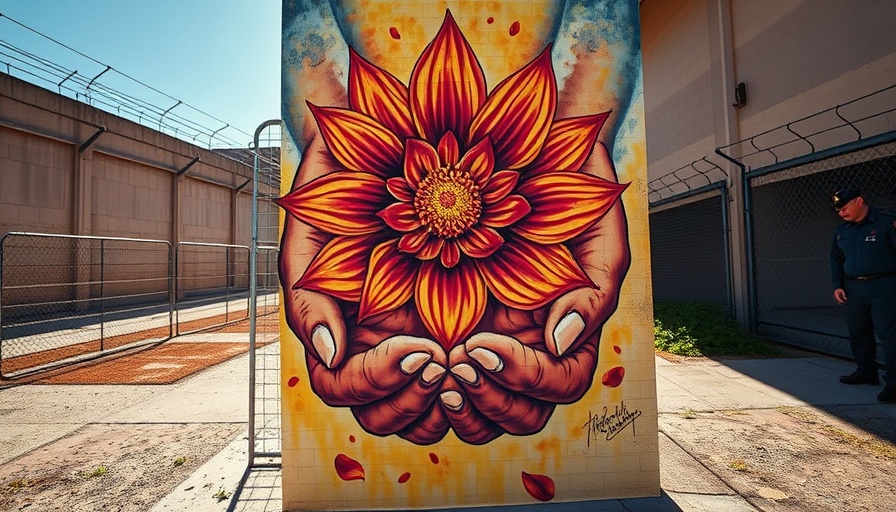
Breaking Barriers: The Art of Freedom from Within
At San Quentin State Prison, vibrant murals are doing much more than decorating walls; they are transcending the confines of their environment to reach audiences far beyond the prison gates. Through the power of art, inmates are expressing a narrative of hope, redemption, and human connection that resonates with communities both local and global.
The Global Influence of Local Art
Art possesses an extraordinary ability to communicate across barriers. The murals created by San Quentin inmates serve as messages not only to fellow prisoners but also to the world outside. Each stroke of the brush represents a desire for connection, understanding, and an aspiration for freedom. As these artists share their perspectives, they bring awareness to their circumstances while inviting dialogue about the systemic issues surrounding incarceration.
Reflecting Reality: How Background Shapes Artistic Expression
Many of the incarcerated artists at San Quentin have deep personal histories that feed into their artwork. These artists draw from their individual experiences of hardship, resilience, and change. The murals become a testament to their struggles and triumphs, depicting narratives that reflect their realities. Such expressions help to humanize those behind bars, showcasing the talents and stories often overlooked by society.
Connecting with Communities: The Collective Response
By reaching out to local artists and communities, San Quentin inmates aim to establish a bridge that fosters empathy and understanding. Outreach programs that invite external artists into the prison encourage collaboration, blurring the lines between freedom and confinement in art. This interaction fuels an exchange of ideas, allowing artists to inspire and be inspired in return, ultimately creating a shared space for creativity.
Future Trends: Art as a Catalyst for Change
As society evolves, so too does the role of art in addressing social justice issues. The murals from San Quentin offer a glimpse into a future where creativity becomes a powerful catalyst for change. There exists an opportunity for broader conversations about rehabilitation and reintegration of inmates into society. How can art serve as a tool for reducing recidivism? This question continues to be explored as programs surrounding arts provide inmates a productive outlet, challenging negative narratives about prison life.
Beyond Muralism: Exploring the Broader Impact of Arts in Prisons
Art programs in prisons carry diverse benefits, from mental health improvement to the development of communication skills. Inmates engaged in creative activities often report feeling a sense of purpose and achievement, which can significantly boost morale and reduce tensions within prison walls. Nationally, organizations that promote arts in incarceration continue to support therapeutic and rehabilitative initiatives, encouraging states to adopt similar programs in correctional facilities.
As prisoners at San Quentin share their journeys through powerful visual storytelling, their work inspires hope and unity. The narratives behind these murals emphasize the intrinsic value of creativity in understanding the struggles of those incarcerated. These artworks stand as a powerful reminder that even within the most challenging circumstances, the human spirit can shine brightly and connect with others across the globe. Art provides a piece of freedom—the belief that impending potentials lie beyond the fences.
To engage with this powerful narrative and support the ongoing dialogue about reform and understanding, reach out to your local representatives. Encourage them to invest in programs and collaborations that empower artistic expression within our correctional systems.
 Add Row
Add Row  Add
Add 



Write A Comment